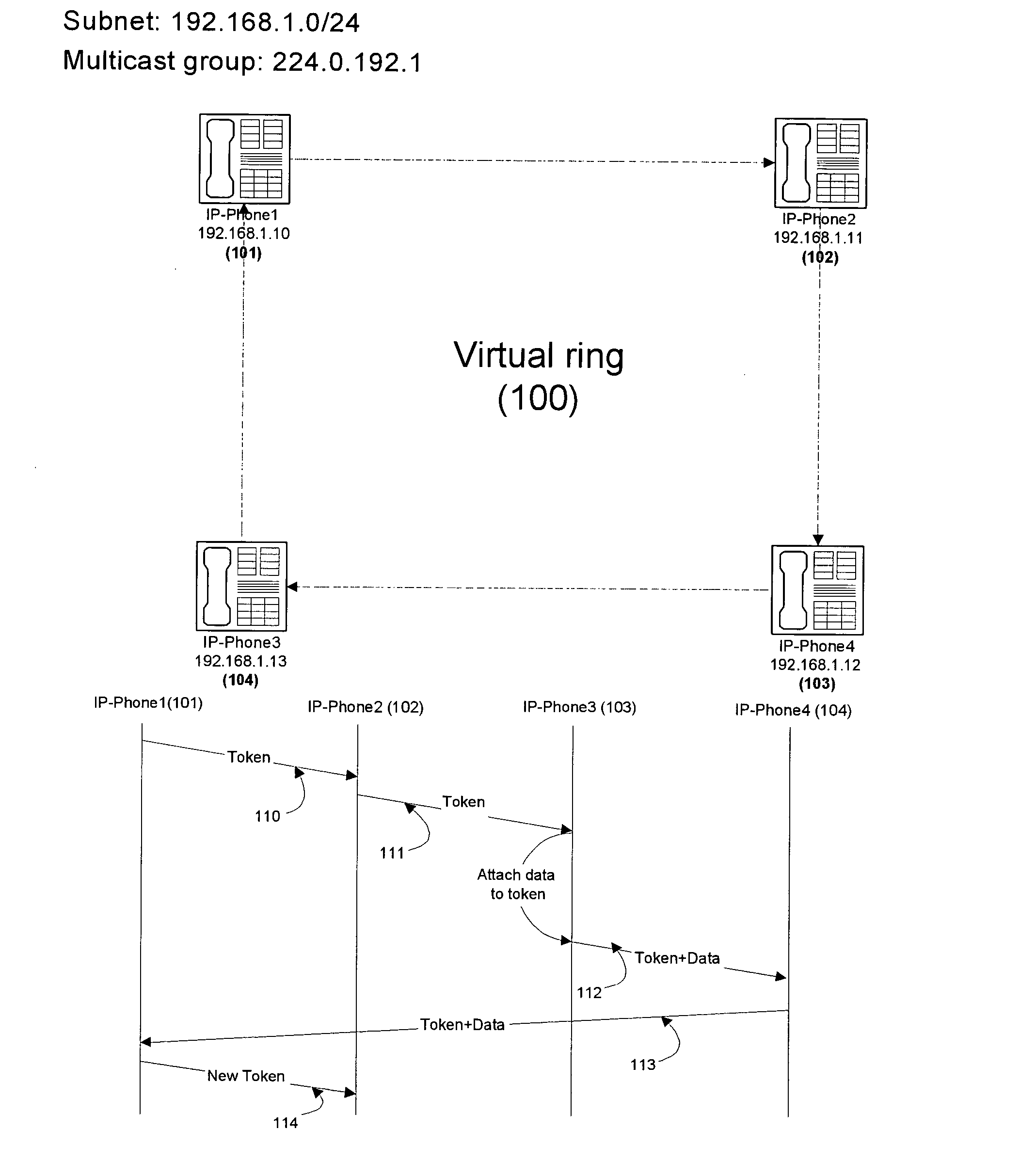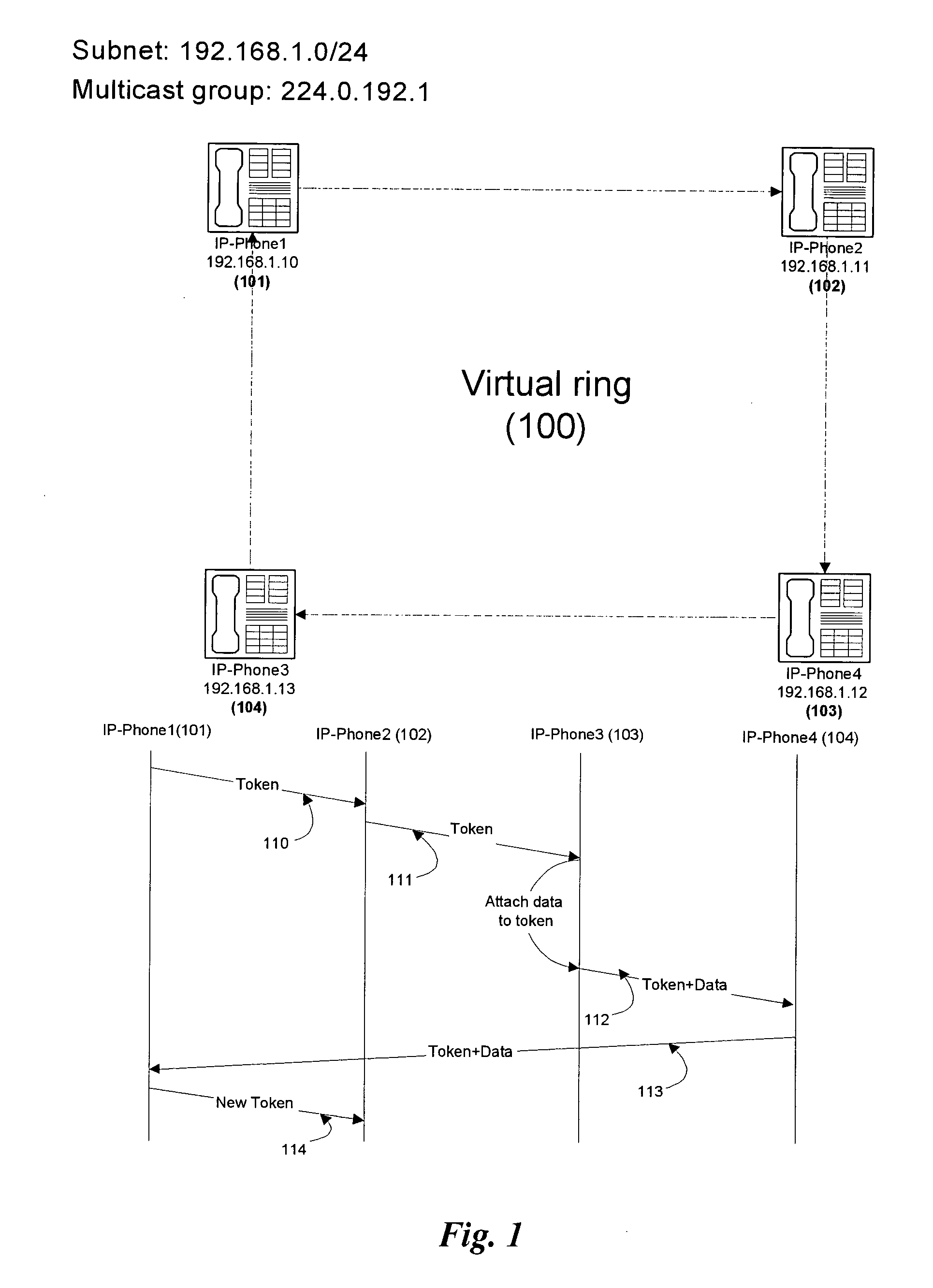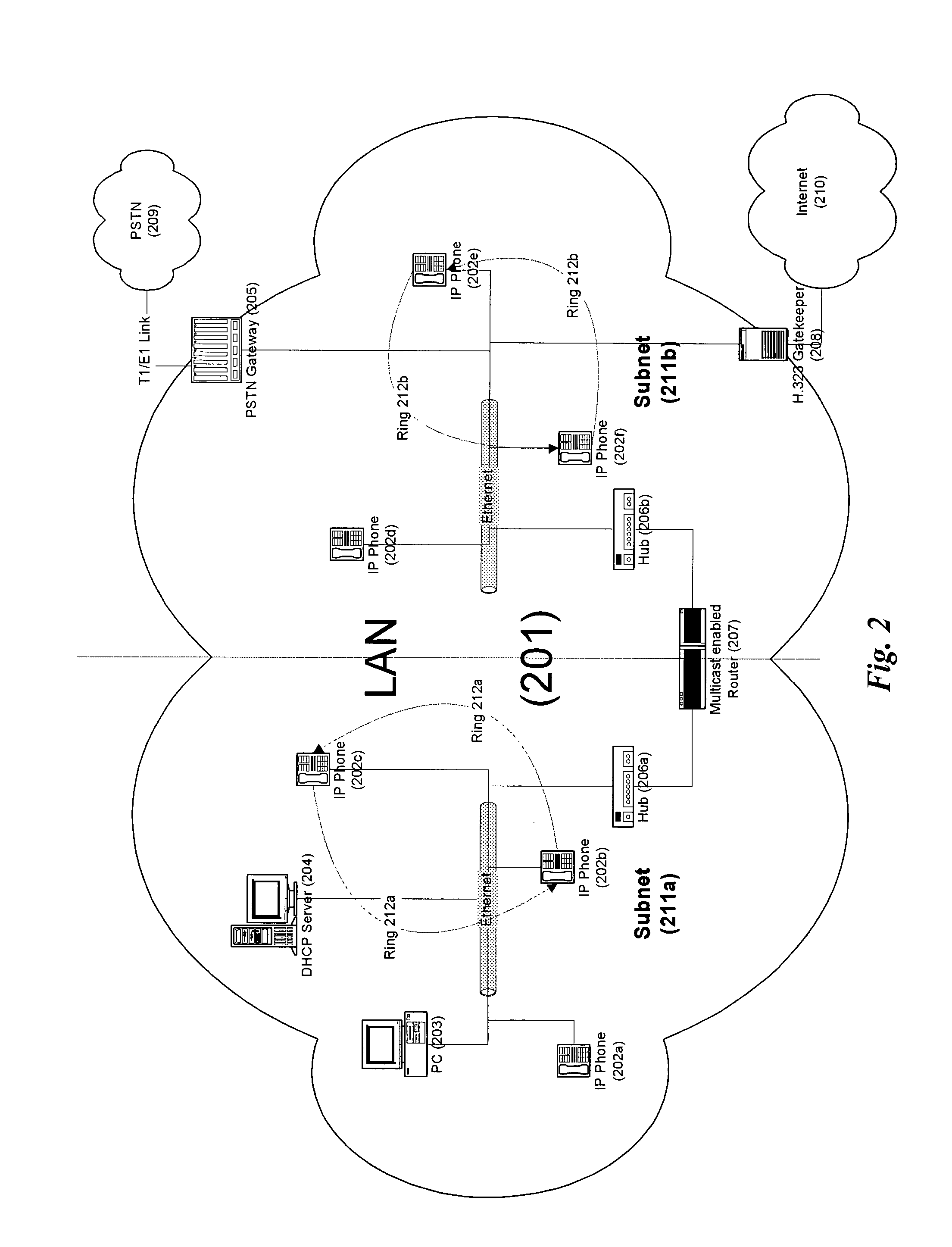Serverless and switchless internet protocol telephony system and method
a serverless and switchless internet protocol telephony and network protocol technology, applied in the field of ip telephony systems, can solve the problems of centralized approach, unable to take full advantage of newly available features of ip networks, and unable to find compelling economics or applications for ip telephony
- Summary
- Abstract
- Description
- Claims
- Application Information
AI Technical Summary
Benefits of technology
Problems solved by technology
Method used
Image
Examples
Embodiment Construction
FIG. 1 is a network diagram illustrating a virtual ring structure and a corresponding time diagram in a preferred embodiment of the present invention. In preferred embodiments of the invention virtual rings are used to provide logical partitioning of nodes in the sub-networks, reliable delivery of messages and support of heart-beat protocol, more fully described below.
A virtual ring is a sequenced number of nodes, each of which recognizes at least two of its members (typically the previous one and next one on the ring). A size of the ring is always limited by a size of its sub-network, e.g. all the nodes of the ring must be members of the same IP sub-network. However, the number of rings inside its sub-network is not limited.
Ring's cohesion is supported by propagating a special message over the ring, which is called a token, similar to IBM Token Ring protocol. The token is generated by one (elected) node (such as 101) in the ring and sent across the ring from one node to another,...
PUM
 Login to View More
Login to View More Abstract
Description
Claims
Application Information
 Login to View More
Login to View More - R&D
- Intellectual Property
- Life Sciences
- Materials
- Tech Scout
- Unparalleled Data Quality
- Higher Quality Content
- 60% Fewer Hallucinations
Browse by: Latest US Patents, China's latest patents, Technical Efficacy Thesaurus, Application Domain, Technology Topic, Popular Technical Reports.
© 2025 PatSnap. All rights reserved.Legal|Privacy policy|Modern Slavery Act Transparency Statement|Sitemap|About US| Contact US: help@patsnap.com



